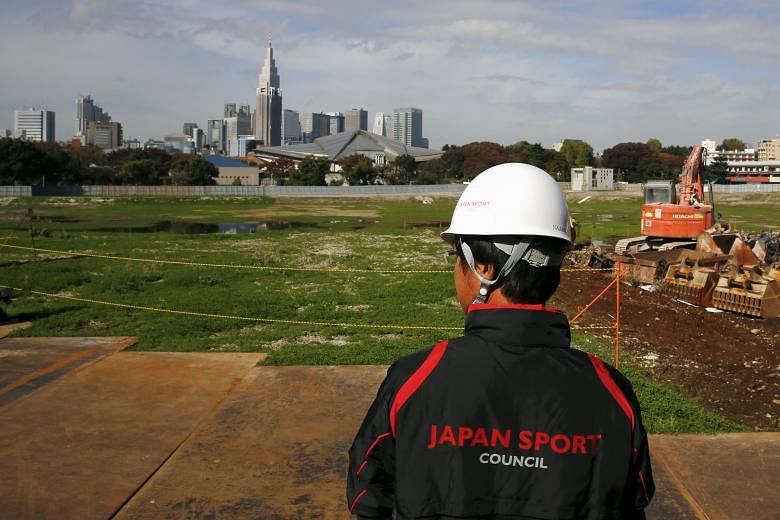LONDON • It was compared with everything from a bike helmet to a potty, and allowed to spiral to almost double its budget, before being scrapped and declared a national embarrassment.
Zaha Hadid's futuristic design for Tokyo's 2020 Olympic stadium would have swaggered through the historic Meiji Park like a glossy white Stormtrooper, breaching local building codes and leaving the city with a costly white elephant.
But are the alternative proposals, unveiled this week, any better?
After Hadid's heady vision, the two new designs might seem a bit bargain-basement. One looks like an undercooked fried egg - a wobbly white roof with a gelatinous, albumeny middle. The other looks like a pile of salad plates cleared away before anyone had finished, with bits of lettuce poking out from between the stack of saucers.
But both are significantly slimmer and cheaper than Hadid's design - around 153 billion yen (S$1.8 billion) as opposed to 252 billion yen - and they appear to be models of a lighter-weight, low-key approach that would fit better with the parkland setting.
Anonymously released as Design A and Design B, but believed to be the work of celebrated Japanese architects Kengo Kuma and Toyo Ito, both are titled Stadium In A Forest and make prominent use of wooden construction, in contrast to Hadid's hefty steel arches.
Scheme A, which looks like the work of Kuma, has a roof supported by a dense lattice of exposed timber trusses. If well-detailed, it could be a magnificent thing, forming a cat's cradle of interlocking beams above spectators' heads and recalling the intricate complexity of Japanese joinery. It would be a first for any contemporary stadium, which usually rely on steel and stretchy skins of materials such as PVC, and a welcome nod to the country's building traditions.
From outside, its seating terraces look like slender piles of plates, supported on rings of raked columns with the air of a traditional Japanese temple, while the whole thing is garnished with greenery. It is too early to tell whether it will be token sprigs or full-sized trees (as some views suggest), but it could enable the park to reclaim the structure after the Olympics, engulfing it with greenery.
Scheme B looks more like it was born on Planet Ito. It has the Pritzker Prize-winning architect's trademark amoebic geometries, with an undulating white steel roof that ripples over the seating bowl. A colonnade of majestic timber columns marches around the perimeter, supporting the roof that flares out like a peaked sailor's cap.
The whole thing is proposed to be sheathed in a full-height skin of glass, bringing all the usual metaphors of transparency and reflection, and allowing the structure to "dissolve into the park".
Whether covering a stadium in plants or glass offers more potential for it to disappear is debatable - and perhaps irrelevant, given that any Olympic stadium will be very visible indeed.
Local reaction has been lukewarm so far. "Both designs have a mundane appearance," Mr Yasuhiro Kimura, a 34-year-old out jogging near the construction site on Monday, told the Japan Times. "I can't tell one from the other."
"They don't have the characteristics particular to Tokyo," added 16-year-old high school baseball player Akihiro Mori.
Such reactions hit on the eternal existential nub of any Olympic stadium design: People expect them to be dazzlingly iconic, the pride of the nation capable of seducing the global television audience at the opening - yet they also insist they must be built at a cut-price cost with as little impact on the context as possible. The two rarely go hand in hand.
Originally intended to host the 2019 Rugby World Cup, the new stadium now will not be ready in time. Whichever option the Japanese choose, it could be the first wooden Olympic stadium in history. They would have to go easy on the fireworks.
THE GUARDIAN

